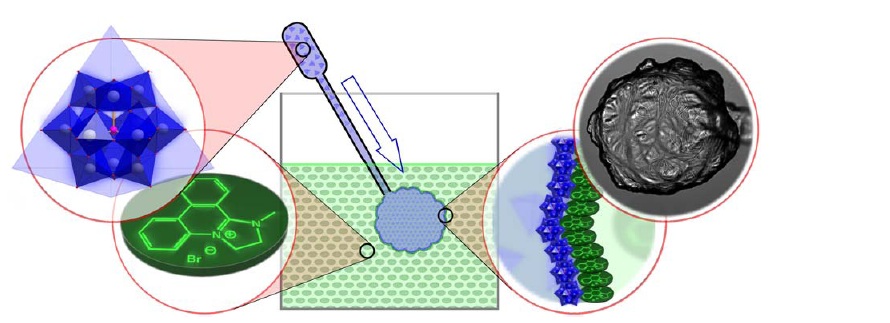What is life? As tough questions come, this is a good one. It seems simple at first, but even after great advances in biology and a sizeable increase in understanding how life works, there appears to be no real consensus on life. To quote Carl Sagan:
Yet despite the enormous fund of information that each of these biological specialties has provided, it is a remarkable fact that no general agreement exists on what it is that is being studied. There is no generally accepted definition of life. In fact, there is a certain clearly discernible tendency for each biological specialty to define life in its own terms. The average person also tends to think of life in his own terms.
Be sure to check this short overview of definitions of life by Carl Sagan to get acquainted with the most common ones.
And now, Professor Lee Cronin from Glasgow University, and his team, are making matters even more complicated through demonstrating a way to make inorganic-chemical-cells, or iCHELLs (see figures 1 and 2). The idea is to create inorganic cells that replicate and evolve. These cells are built with metal-containing molecules, and through the creation of selective internal membranes, they are also compartmentalized (see video 1).

(Source: Cooper et al., 2011)

Figure 3: Mass-production of membrane sacks ranging from 100-400 μm using a microfluidic
(Source: Cooper et al., 2011)
As the project continues, the team plans to show that these iCHELLs are capable of self-replication and evolution (possibly with the help of polyoxometalates, of which Professor Cronin has shown, last year in Science, that they can use each other as templates to self-replicate). Because after all, in the words of Professor Cronin:
Bacteria are essentially single-cell micro-organisms made from organic chemicals, so why can't we make micro-organisms from inorganic chemicals and allow them to evolve?
And here is a video of Professor Cronin explaining the project:
Obviously, there are still hurdles to overcome. And if the team is successful, there is still the question: is this life?
You be the judge…
Reference
Cooper, G.T.J.; Kitson, P.J.; Winter, R.; Zagnoni, M.; Long, D.-L. and Cronin, L. (2011). Modular Redox-Active Inorganic Chemical Cells: iCHELLs. Angewandte Chemie International Edition. Published online 8 September 2011. doi:10.1002/anie.201105068.





Comments